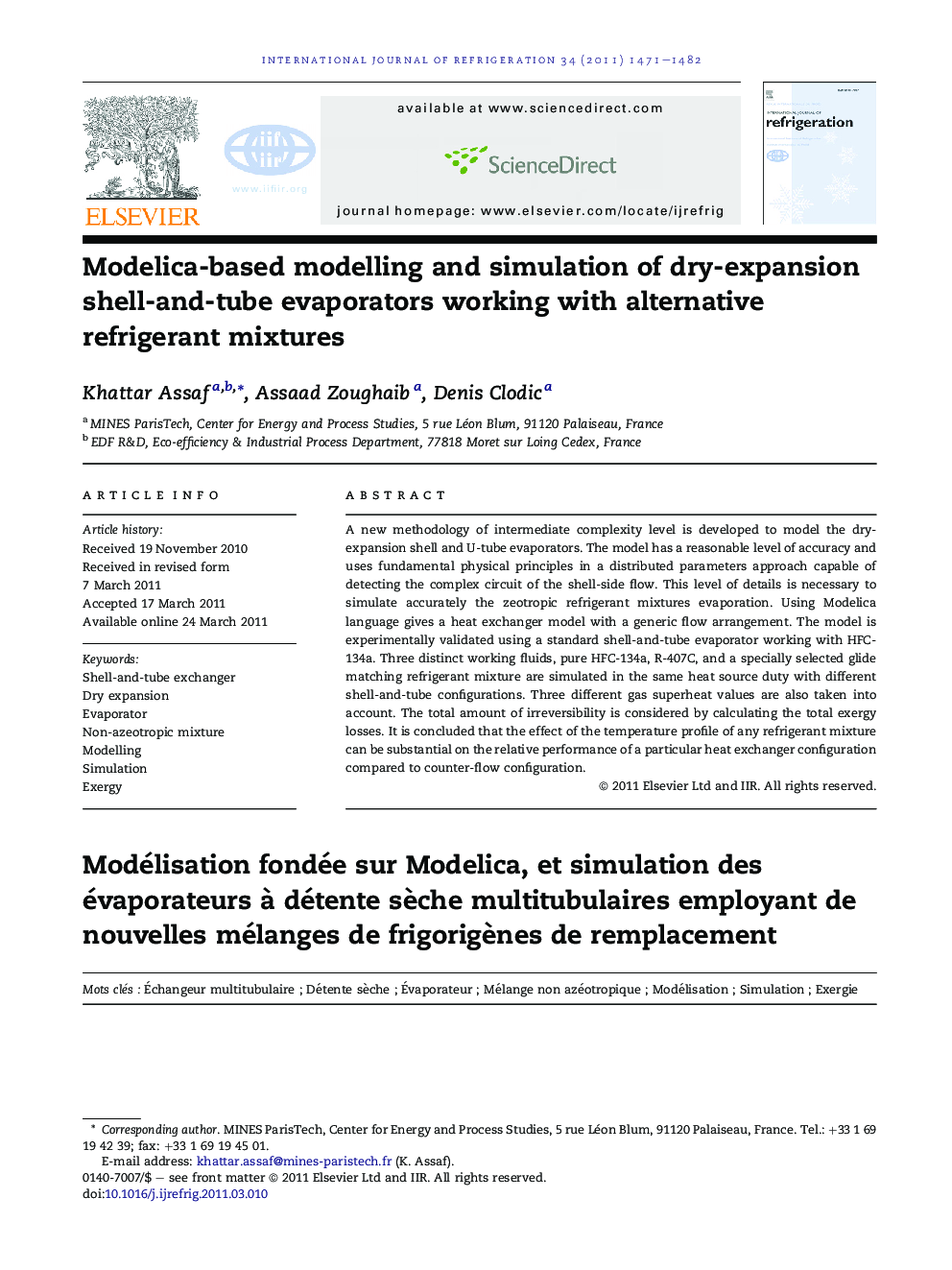| Article ID | Journal | Published Year | Pages | File Type |
|---|---|---|---|---|
| 787242 | International Journal of Refrigeration | 2011 | 12 Pages |
A new methodology of intermediate complexity level is developed to model the dry-expansion shell and U-tube evaporators. The model has a reasonable level of accuracy and uses fundamental physical principles in a distributed parameters approach capable of detecting the complex circuit of the shell-side flow. This level of details is necessary to simulate accurately the zeotropic refrigerant mixtures evaporation. Using Modelica language gives a heat exchanger model with a generic flow arrangement. The model is experimentally validated using a standard shell-and-tube evaporator working with HFC-134a. Three distinct working fluids, pure HFC-134a, R-407C, and a specially selected glide matching refrigerant mixture are simulated in the same heat source duty with different shell-and-tube configurations. Three different gas superheat values are also taken into account. The total amount of irreversibility is considered by calculating the total exergy losses. It is concluded that the effect of the temperature profile of any refrigerant mixture can be substantial on the relative performance of a particular heat exchanger configuration compared to counter-flow configuration.
